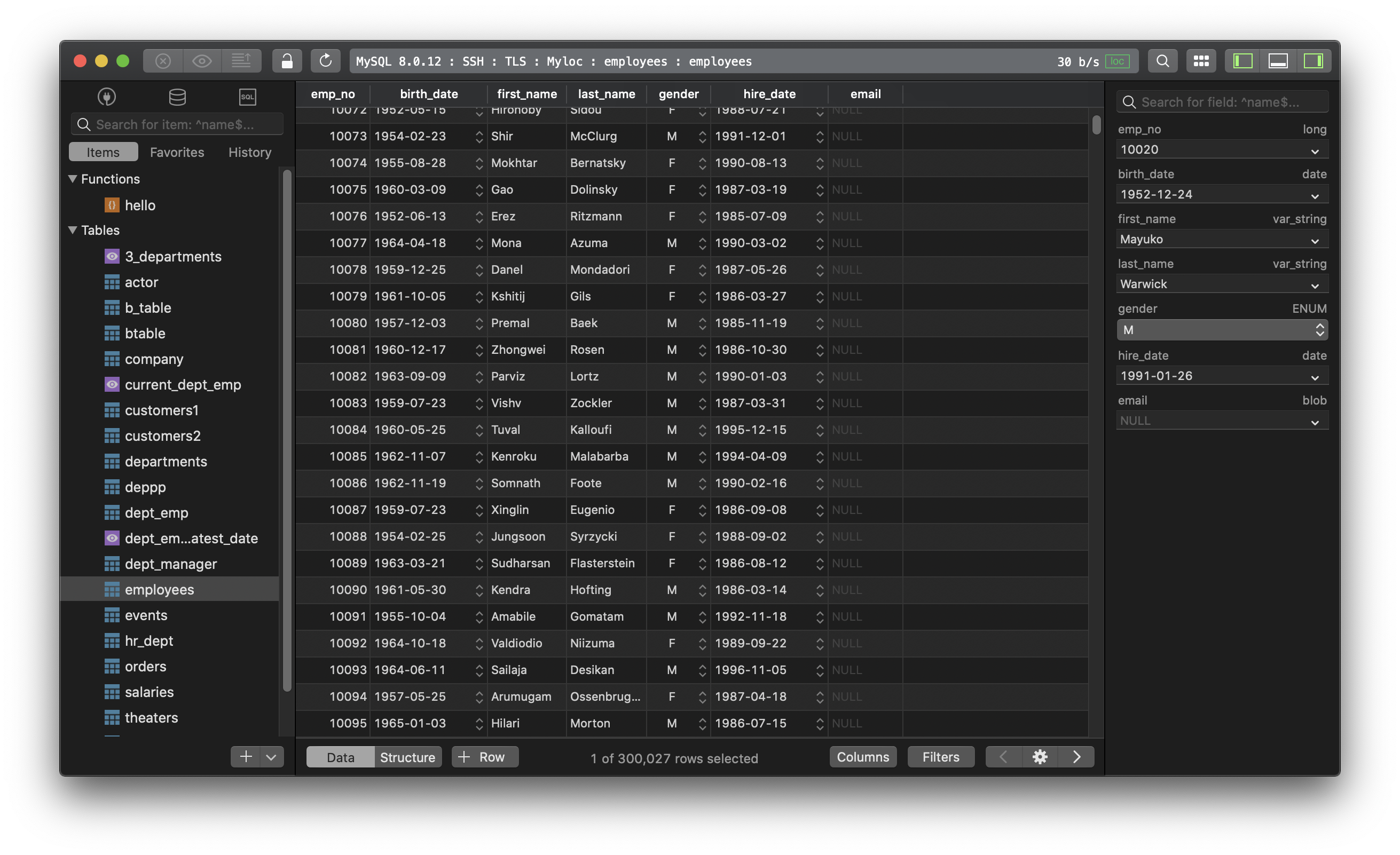MySQL 8 is now supported in TablePlus GUI Tool (for Mac)
What’s new in MySQL 8?
More secure, more reliable, better JSON handling and Unicode support, SQL Window functions, and bunches of other performance improvements are being put together in this recent release for the most popular open source database, MySQL 8.0.
Some notable new features:
Better Unicode support. The latin1 is no longer being used as the default encoding, replaced by UTF8MB4, which is much faster and more flexible.
You can now make use of SQL Window functions. For each row from a query, perform a calculation using rows related to that row. Moreover, some existing aggregate functions can now be used as Window functions such as SUM() and AVG().
Better JSON Support. Using MySQL 8 eliminates the need for an additional NoSQL database as it added some very impressive improvement for JSON. We can expect a better performance for sorting and grouping JSON values. New features added were Table and Aggregate Functions. Also, MySQL 8.0 added support for partial update for the JSON_REMOVE(), JSON_SET() and JSON_REPLACE() functions.
In addition, GeoJSON supports have been added which allows MySQL 8 to understand latitude and longitude coordinates on the earth’s surface and can do some calculations such as the distance between two locations on Earth.
Better document store. In MySQL 8, reads and writes to the document store use transactions. Unlike working with a relational database and storing data in a table, when all the columns of the table must be defined before inserting data, you can now use MySQL 8 to create a document describing products without having to know and define all the attributes before storing and operating them in the database.
Common Table Expression is now supported, both recursive and nonrecursive. This is a commonly requested feature among the community. From the release note, “Non-recursive CTEs can be explained as “improved derived tables” as it allows the derived table to be referenced more than once. A recursive CTE is a set of rows which is built iteratively: from an initial set of rows, a process derives new rows, which grow the set, and those new rows are fed into the process again, producing more rows, and so on, until the process produces no more rows.”
New Database Role Permissions. MySQL 8 simplifies user access management by adding new support for roles, so you can grant permissions to a role and apply it to a user.
So, does TablePlus support MySQL 8?
If you’re looking for a GUI Tool for MySQL 8, yes, you now can use TablePlus to access and manage your MySQL 8 database seamlessly.

Start using TablePlus for free: Download the latest build of TablePlus